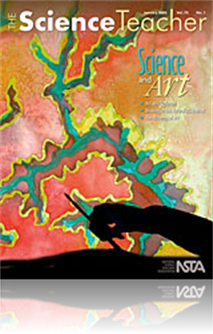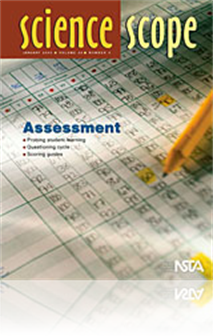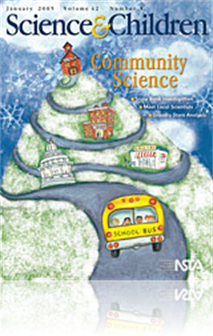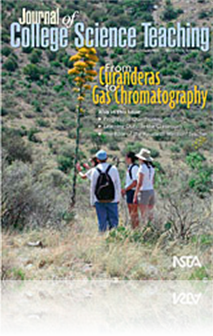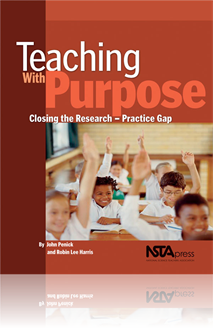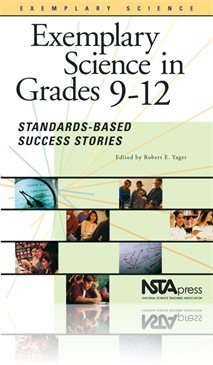All Resources
Journal Article
Drawing Students Out: Using sketching exercises to hone observation skills
Integrating art into science can help students hone their observation skills. In this introductory biology course, the teacher requires students to sketch everything from prepared slides of mitosis and plant anatomy to field sightings of birds and pr...
Journal Article
Science Sampler: Pictures in the sky
This "stellar" project helps students think in both two and three dimensions, displays the relative distances between the Earth and stars, and introduces students to the constellation myths of diverse cultures....
Journal Article
Teaching Through Trade Books: Antarctic Adaptations
Penguins! This month’s Teaching Through Trade Books column celebrates those tuxedo-clad birds that have come to symbolize winter and provides students with the opportunity to investigate adaptations that help penguins survive in their environment. ...
Journal Article
Guest Editorial: Where are we now?
Results from the 2003 Trends in Mathematics and Science Study (TIMSS) and the Program for International Student Assessment (PISA), two major international studies of achievement in science and mathematics, provide insights and an opportunity to incre...
Journal Article
Biological Effects of Static Magnetic Fields: Ideal Experiments for Introductory Courses
A serendipitous finding involving static magnetic fields can be used to design experiments suitable for both science and nonscience majors. It has been reported that organisms respond differently to high-gauss magnetic fields generated by north poles...
Journal Article
Tried and true: Feeding of Diarmis Proboscis
The feeding of Diarmis proboscis is an exciting outdoor laboratory activity that demonstrates a single concept of adaptations--cryptic colorations. The students are “transformed” into D. proboscis in order to learn how adaptations work in the n...
Journal Article
The Case Study: An Open or Shut Case? Contrasting Approaches to Case Study Design
The hallmark of an open-ended case study is the possibility of multiple outcomes to the problem at hand. This adds to its realism, provokes higher-order thought, and attracts many instructors to case analysis. Yet, there are circumstances in which a ...
Book Chapter
Making a Case for a Research-Based Teaching Rationale
This chapter demonstrates the importance of developing a detailed plan or rationale for teaching science that will help you achieve improved results in the classroom. Although every teacher's plan or rationale will be different in some ways, it has ...
Book Chapter
Elements of a Research–Based Rationale
In Chapter 1, the 10 key aspects that most plans embrace were mentioned. This chapter looks more closely at how to address these 10 key aspects. This includes setting goals for students and defining the roles of students and teachers in the classro...
Book Chapter
Developing a Research–Based Rationale
Developing a research-based rationale requires formulating a way of thinking about teaching. Rather than a casual, weekend effort, the creation of a complete rationale is a long-term enterprise that may last for years and may never be finished (and p...
Book Chapter
Implementing Your Rationale and Becoming a Mentor
In this chapter, the authors discuss how you can implement your rationale in the classroom and use it to become a mentor to others. As you develop and implement research-based rationale for teaching, you will find yourself changing—teaching and com...
Book Chapter
It's the "Little Things" That Can Change the Way You Teach
The "Little Things" project is a unique curriculum on the soil ecology of microbes that offers students an opportunity to engage in real science research, develop an understanding of the biochemistry of soil microbes and to cultivate in students, an ...
Book Chapter
Sing and Dance Your Way to Science Success
The research in this chapter was conducted at Independence High School in Charlotte, North Carolina to determine whether creating a different kind of classroom learning environment could help at-risk students achieve success in biology. The research ...
Book Chapter
Student Inquiry at the Illinois Mathematics and Science Academy
This chapter features the Student Inquiry Program at the Illinois Mathematics and Science Academy (IMSA)—an internationally recognized, pioneering educational institution created by the State to develop talent and stimulate excellence in teaching a...
Book Chapter
Teacher Action Research on Interactive Lectures: Engaging All Students in Verbal Give-and-Take
Amherst Regional High School is a public school located within a five-college community in western Massachusetts. Most of the work outlined in this chapter springs from a course on Collaborative action research (Car). Conducting action research allow...



